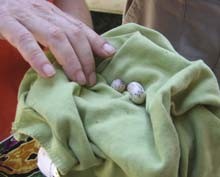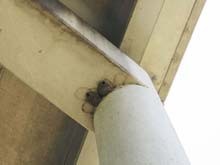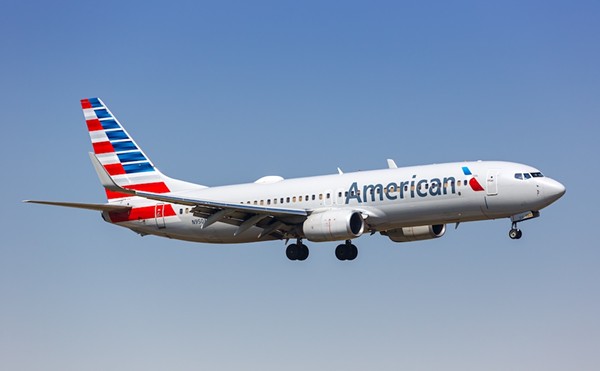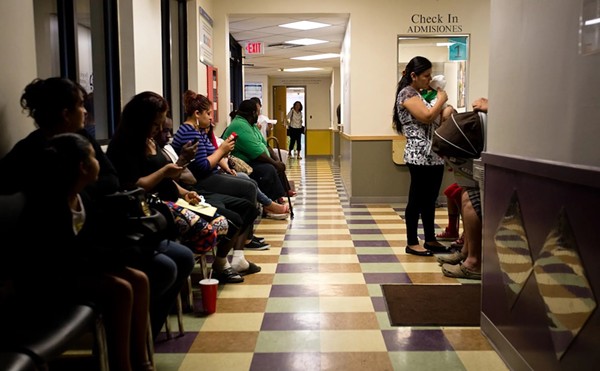Construction forces rescue of federally protected cave swallows
The expressways that conveniently whisk us from one end of the city to another take their toll on human habitats: Highway construction divides and demolishes neighborhoods and displaces residents, many of whom don't have the political clout to stop the flow of concrete.
Yet, humans are not the only ones whose lives are upended when the wrecking ball swings: Wildlife, whose political power embedded in federal and state laws is often ignored, must pack up and move or die.
| Rescuers relocated cave-swallow eggs from the overpass at Zarzamora Street and Loop 410. (Photos by Lisa Sorg) |
This clash of urbanization and wilderness forced the Texas Department of Transportation and San Antonio-based contractor, H.P. Zachry, to contend with nearly 100 federally protected cave swallows who had built a neighborhood of mud-and-saliva nests in the beams of the overpass at Zarzamora and Loop 410.
The state hired Wildlife Rescue & Rehabilitation to relocate 96 eggs, nestlings, and fledglings to dwellings at a nearby overpass where foster parents will likely care for them as their own. Cave swallows are known to adopt birds from other nests; as for the original parents, they will have to find their own way.
"These are very fragile lives about to be disrupted," said Wildlife Rescue & Rehabilitation Executive Director Lynn Cuny, who led the relocation.
On June 16, rescuers wore hard hats and rode in cherry pickers to reach the underside of the Zarzamora Street overpass, where they used mirrors to find the nests and mortar spades to carefully dislodge them. On the ground, rehabilitation workers prepared towels, shoeboxes, and eyedroppers of Pedialyte in case the birds became dehydrated.
| Cave swallows build mud nests using their saliva to hold them together. |
"Careful, they have mites and they'll get on you, too," Cuny told a rescuer as she laid a nest of freshly feathered fledglings in shoe boxes, including one that bore the brand name "Born."
Rescue workers rushed the birds and eggs to an awaiting cherry-picker beneath a second, higher overpass, where a larger neighborhood of cave swallows live. With two hands, a TxDoT worker gingerly cradled a green towel containing several white-and-brown-speckled eggs, each about the size of two jellybeans. Meanwhile, the refugee nestlings, their eyes shut, their translucent, pink skin as delicate as tissue paper, waited for their new homes.
As rented apartments have occupancy limits, so do nests. Texas Parks and Wildlife regulations require a maximum of five birds per nest, so rescuers had to ensure they did not overload existing homes.
This was the first time TxDoT had contacted a group to rescue birds or animals. "Who knows how many times this has happened?" said Cuny, adding that the rescue would have been unnecessary had Zachry heeded TxDoT's warnings about the nesting area.
TxDoT wildlife biologist Valerie Collins sent an e-mail in March, the start of the cave-swallow nesting season, asking Zachry to look for the distinctive-looking nests, which stick to ledges or undersides of beams and have round doorways, but the contractor apparently did not heed her suggestion. "They did nothing," she said.
Contractors could have erected meshing or fencing to prevent the cave swallows from nesting. Cave swallows are migratory, nesting in Texas in the spring and summer and wintering in Mexico and the Caribbean.
Three months later, TxDoT and Zachry were confronted with a conundrum: meeting construction deadlines on the $12 million project while abiding by the federal Migratory Bird Treaty Act, which protects migratory birds and their active nests.
Cuny said that although the nesting season runs through October, in two weeks the young birds would have been ready to fly, and the relocation would have been unnecessary. But TxDoT couldn't stop the project, said David Kopp, TxDoT director of the San Antonio district, because the delay would have cost $500,000, as compared to the $126 per relocated bird the state paid Wildlife Rescue.
The project's estimated completion date is November 2006.
Rescuers monitored the nests to ensure that the adoptive parents accepted their new wards. In one instance, they had to go back up and relocate one group of birds because no parent had entered the nest. Three fledglings also flew away.
Meanwhile, back at the Zarzamora overpass, "It was a horrible sight. The parents were waiting by their nests," Cuny said. "Suddenly there are no eggs, no babies."
The following Monday, the overpass and the swallows' neighborhood were scheduled to be demolished. •
By Lisa Sorg



















